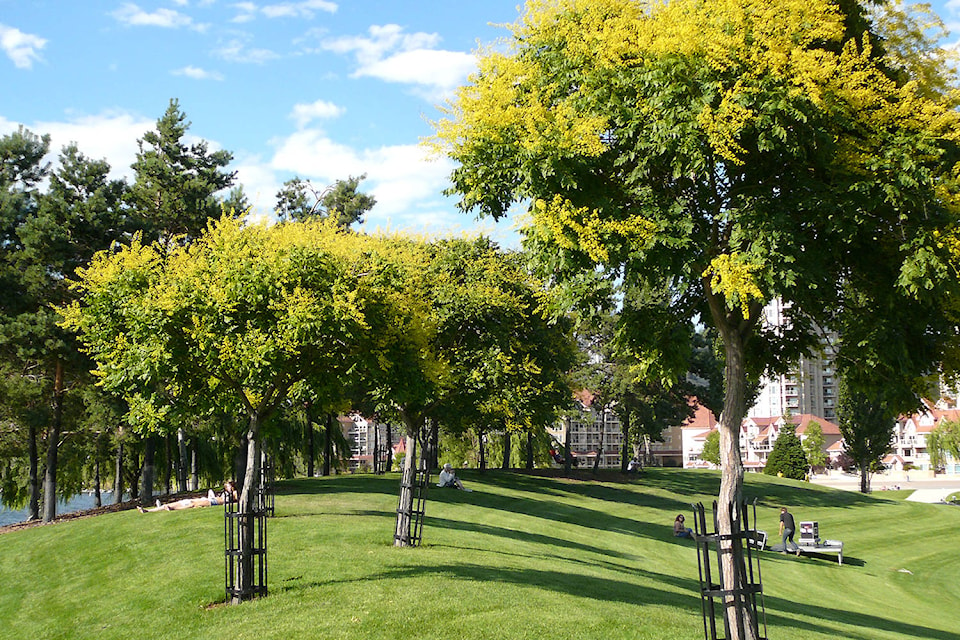In this extensive summer heat, I am very grateful for trees.
I91ÂãÁÄÊÓƵ™m fortunate that my property had several mature trees when I bought it so I can always find a shaded spot to tend one of my gardens or to sit and enjoy watching the pollinators and birds that visit.
When I first moved here, I wasn91ÂãÁÄÊÓƵ™t happy about the weeping willow.
I knew they suck a lot of water out of surrounding soil and constantly shed twigs and leaves.
This tree had been topped (pollarded) so it wasn91ÂãÁÄÊÓƵ™t as healthy or beautiful as it could have been.
I seriously considered having it cut down, however that first summer, the shade it gave on the west side of the house was a godsend. Thirteen years later, because of the pollarding, I have spent a lot of money to keep it healthy and safe.
I seldom water the willow or the dry garden underneath it. The tree has a very well-established root system to access deeper ground water.The back garden has a huge blue spruce which never gets watered.
In the summer I enjoy its shade. It also serves to hold up my well-used clothes line.
However it91ÂãÁÄÊÓƵ™s a tree that should never have been planted on a city lot. It91ÂãÁÄÊÓƵ™s too big and nothing will grow under it.
Worst of all it is on the south side of the house, so it blocks much wanted winter sunlight.
In my front yard I have a beautifully shaped mature honey locust which provides dappled shade. Trees are the largest, and generally longest-lived plant in any landscape. They need to be placed carefully so they can grow to mature size.
It91ÂãÁÄÊÓƵ™s important to place them an adequate distance from buildings and walkways. They also need to be able to grow to full height without running into power lines, clothes lines or obscuring a desirable view.
Trees planted in the wrong place may require costly pruning to keep them within space limitations. Often this destroys the look and the health of the tree. For small spaces there are several low-water species that are 25 feet or less at maturity.
The Amur Maple and Golden-Rain tree are lovely, small, umbrella-shaped shade trees, growing twenty to twenty-five feet high and wide.
The Golden-Rain tree has yellow flowers in July and lantern seed pods that are attractive in winter. It requires good drainage so is not suitable for clay soils.
The Japanese tree lilac 91ÂãÁÄÊÓƵ˜Ivory Silk91ÂãÁÄÊÓƵ™ is a similar shape but only sixteen feet wide. In late spring it has large plumes of creamy flowers.
Apricot and Italian plum trees can be trained to form a shape and size similar to the Amur Maple. Both are drought-tolerant once established and produce well without needing any pesticide sprays.
For information on these and other drought tolerant trees, go to the plant database at www.okanaganxeriscape.org
Gwen Steele is executive-director of the non-profit Okanagan Xeriscape Association. Learn more about Gardening with Nature and plants for the Okanagan on the website at www.okanaganxeriscape.org



